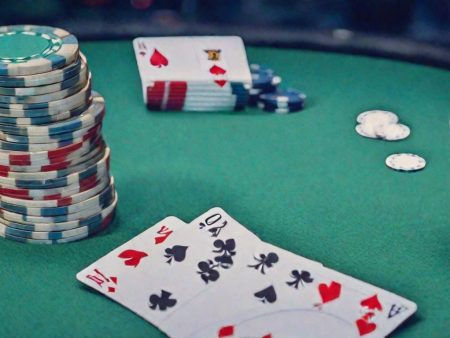In poker, the term “tight” refers to players who approach the game with caution, being selective and only playing the strongest hands. The word “tight” derives from its meaning in English—“tight” or “compressed”—reflecting a style of play where only the best hands are considered for action.
Characteristics of Tight Play Style
A tight player follows several defining characteristics in their approach to poker:
- Selective Hand Selection: Tight players limit their starting hands to strong combinations. They prefer high pairs (such as queens or kings), high suited connectors (like AK or AQ), and occasionally certain middle-range hands (e.g., 10-10).
- Cautious Betting: These players tend to keep their betting minimal, always evaluating the size of the pot before committing further. They aim for accurate assessment of probabilities and bet sizes to avoid unnecessary risks.
- Rare Bluffing: Bluffing is not a common tactic for tight players. They prefer to bet only when they hold strong cards, favoring straightforward and honest play.
- Minimizing Risk: The primary focus of tight players is to reduce risk and preserve their bankroll. They avoid playing hands with low chances of success, ensuring they make the most of their stronger hands.
- Position Awareness: Tight players value their position at the table, often preferring to act later in the round, where they can gauge the actions of their opponents and make more informed decisions.
- Discipline and Strategy: They follow a strict strategy and stay disciplined in their decisions. Tight players are studious and prefer to stick to a well-defined plan.
- Bankroll Management: Tight players are mindful of their bankroll. They set strict limits on losses and aim to avoid large swings in their finances.
The tight style can be particularly effective in the early stages of a game. It requires a solid understanding of probabilities and the ability to adapt to changing circumstances during play.
Read also: What chips are needed to play poker.
Advantages and Disadvantages of Tight Play Style
The tight play style has both benefits and drawbacks. It’s essential to recognize that poker doesn’t have a one-size-fits-all approach, and your style should align with your goals, skill level, and game format.
Pros:
- Minimized Losses: Tight players avoid weak hands, significantly reducing their risk of losing money in marginal situations.
- Stable Bankroll: The cautious nature of this style leads to smaller fluctuations in the bankroll, providing better control over finances.
- Exploiting Weaker Players: By consistently showing strong hands, tight players are more likely to encounter weaker opponents who will fold to their bets, even with relatively average hands.
- Beginner-Friendly: Tight play is easy for beginners to grasp as it minimizes the complexity of decision-making and bluffing, making it a suitable style for those just learning the game.
Cons:
- Predictability: Over time, tight players become predictable. If they start raising significantly, opponents are likely to suspect they hold a powerful hand.
- Missed Opportunities: This style’s inherent caution can cause tight players to miss opportunities to win larger pots, often folding good hands due to fear of taking risks.
- Difficulty Bluffing: Since tight players usually bet only when strong, they struggle with effective bluffing, which can be a key strategy for manipulating opponents.
- Aggressive Attacks: Experienced opponents who recognize a tight playstyle may start aggressively targeting these players, attempting to push them out of pots or force them to fold.
In general, the decision to adopt a tight style depends on your individual goals and comfort level with risk. Some players find success by blending their style, adapting to different situations as they arise.
How to Play Against a Tight Player
For those who’ve installed an online casino on their mobile device, poker offers a chance to try out different competition levels. If you’re facing tight players, understanding how to approach their style will help reduce the risk of losses.
Read also: What are nuts in poker?
When playing against a tight player, your strategy needs to be cautious, as they only play a select number of hands. Here are some key tips for dealing with them:
- Widen Your Range: Tight players tend to fold hands that aren’t strong enough. You can take advantage of this by increasing the number of pots you enter and playing a broader range of hands, even weaker ones.
- Use Aggression: Tight players typically prefer strength, so use aggression to put pressure on them. Large bets can force them to reconsider their own hand’s strength, potentially causing them to fold.
- Patience is Key: Tight players won’t participate in many pots, so patience is essential. Wait for the right moment to make your move. Bluffing too often won’t be effective, as they tend to call if they believe they have a strong hand.
- Understand Betting Patterns: Tight players will often raise from an early position, signaling a strong hand. If they act from a later position, they might be playing a wider range of hands. Adjust your strategy accordingly.
- Stay Analytical: Always keep an eye on your opponent’s moves. By consistently analyzing their game, you can anticipate their actions and adapt your strategy to gain the upper hand.
Adapting to a tight player requires a keen understanding of their patterns and the ability to adjust your game plan based on the evolving situation. Whether you are playing as a tight player or facing one, recognizing opportunities and responding to the dynamics of the table is crucial for success.
In conclusion, should you be searching for an online casino with a low minimum deposit of $20, you can follow this link for more information. You can also check out our blog for further insights into the gambling industry. Don’t miss out on valuable insights about slot games! Visit the slot and gambling blog to explore mechanics, RTP, and winning strategies.
FAQ: What does a secret player mean in poker?
What is a “secret player” in poker?
A secret player in poker refers to someone who intentionally conceals their playing style, skill level, or strategies to gain an advantage over their opponents.
Why do players choose to remain secretive at the table?
By keeping their abilities and tendencies hidden, secret players make it harder for opponents to read their moves, predict their strategies, or exploit their weaknesses. It’s a way to maintain unpredictability.
What are common characteristics of a secret player?
Secret players often mix up their strategies, avoid showing their cards unnecessarily, and maintain a neutral or deceptive table demeanor. They’re skilled at masking their emotions and intentions.
How does being a secret player affect the game dynamics?
A secret player can create uncertainty and pressure at the table. Their unpredictability forces opponents to play more cautiously, potentially making mistakes or missing opportunities.
What strategies can opponents use against secret players?
To counter a secret player, opponents should focus on observing patterns over time, keeping their own play balanced, and avoiding overly aggressive or passive responses to unclear signals.
Is being a secret player always an advantage?
While it can provide a strategic edge, being overly secretive might limit opportunities to build pots or extract value from strong hands. The key is to balance secrecy with timely aggression.
What common mistakes do players make when trying to be secretive?
Common mistakes include being too passive, missing chances to capitalize on strong hands, or overcomplicating their strategy to the point of becoming inconsistent or predictable in other ways.






